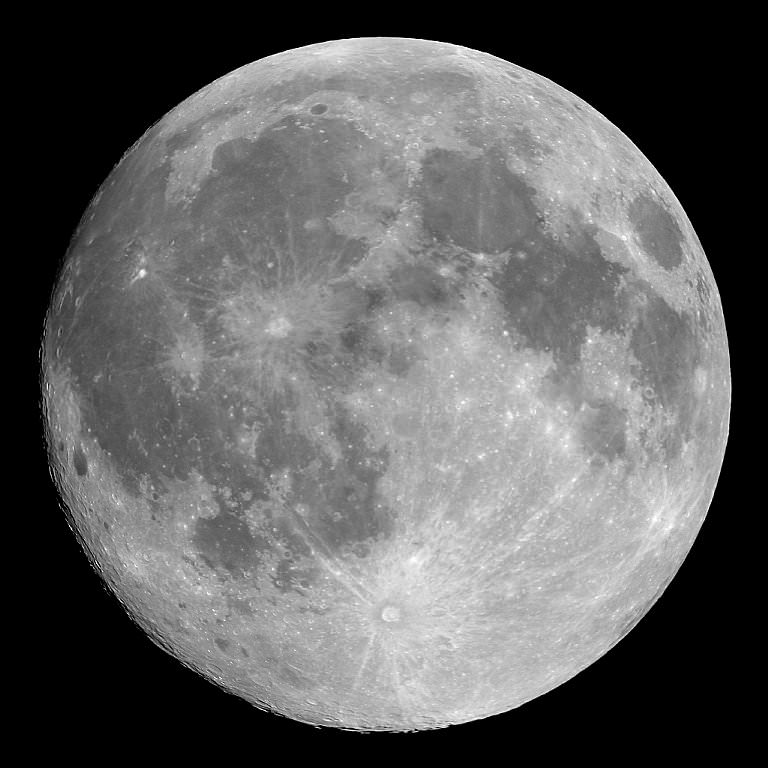The general consensus is that Theia crashed into Earth billions of years ago and led to the formation of the Moon. The story doesn’t end there though since there are a few lines of evidence to suggest the Moon could have been captured by the gravitational pull of the Earth instead. The orbit of the Moon is one such observation that leads to a different conclusion for it’s in-line with the plane of the ecliptic rather than the Earth’s equator. A team of researchers have suggested capture theory was the Moon’s origin.
Continue reading “Was the Moon Captured?”Rewriting Lunar History
[/caption]
We thought we knew everything there was to know about our Moon, but new investigations into its volcanic origins are causing scientists to take another look at how our nearest astronomical neighbor formed – and its age. If you like a little lunacy in your life, then step inside and read more…
A team of scientists led by Carnegie’s Erik Hauri have been busy studying seven tiny Apollo 17 return samples with a a state-of-the-art NanoSIMS 50L ion microprobe. These little pieces of lunar “evidence” are fragments of lunar magma which contain crystals called “melt inclusions”. High in titanium content, these crystals were once a part of volcanic glass beads ejected in explosive volcanic eruptions. The cool part is these melt inclusions coughed up from the lunar depths eons ago yielded a discovery – the magma trapped within crystals show a hundred times more water than once believed.
“In contrast to most volcanic deposits, the melt inclusions are encased in crystals that prevent the escape of water and other volatiles during eruption. These samples provide the best window we have to the amount of water in the interior of the Moon,” said James Van Orman of Case Western Reserve University, a member of the science team. The paper’s authors are Hauri; Thomas Weinreich, Alberto Saal and Malcolm Rutherford from Brown University; and Van Orman.
As meteorite fans well know, water content is everything and the inner Solar System was nearly devoid of it and other volatile elements during early formation. Past lunar studies show an even lower content, supporting the giant impactor theory – a theory which could very well need to be reconsidered. New findings also point to the need for more sample returns from other Solar System bodies as well.
“Water plays a critical role in determining the tectonic behavior of planetary surfaces, the melting point of planetary interiors, and the location and eruptive style of planetary volcanoes,” said Hauri, a geochemist with Carnegie’s Department of Terrestrial Magnetism (DTM). “We can conceive of no sample type that would be more important to return to Earth than these volcanic glass samples ejected by explosive volcanism, which have been mapped not only on the Moon but throughout the inner Solar System.”
But this isn’t a first for Saal. Three years ago the same team reported the first evidence for the presence of water in lunar volcanic glasses. Using modeling, they were able to theorize how much water was contained within the magma before eruption. From those results, Weinreich, a Brown University undergraduate, found the melt inclusions. This permitted the team to measure the pre-eruption concentration of water in the magma and estimate the amount of water in the Moon’s interior.
“The bottom line,” said Saal, “is that in 2008, we said the primitive water content in the lunar magmas should be similar to the water content in lavas coming from the Earth’s depleted upper mantle. Now, we have proven that is indeed the case.”
Of course, this could mean changing scientific thought on where lunar pole ice deposits originated, too. Current theory suggests they are the product of comets and meteoroid impacts – but perhaps they also could be magma related. It’s a fascinating study which could also help us to understand the properties of other planetary bodies.
But the magma doesn’t stop there…
According to new research from a team that includes Carnegie’s Richard Carlson and former-Carnegie fellow Maud Boyet, magma samples might be revealing a younger Moon, too. Building on the giant impactor theory, samples of a rock type called ferroan anorthosite, or FAN, are being examined. Believed to be the oldest of the Moon’s crustal rocks, FAN could be as old as 4.36 billion years – a figure much younger than previous lunar estimates. Using isotopes of the elements lead and neodymium, the team analyzed the samples for consistent ages from multiple isotope dating techniques.
“The extraordinarily young age of this lunar sample either means that the Moon solidified significantly later than previous estimates, or that we need to change our entire understanding of the Moon’s geochemical history,” Carlson said.
What does all this mean? Thanks to our understanding of the oldest terrestrial minerals, such as zircons from western Australia, we can derive the Moon’s crust may have evolved at the same time as Earth’s… a time which could date back to a giant impact. “The Earth’s Moon is the archetypical example of this type of differentiation.” says the team. “Evidence for a lunar magma ocean is derived largely from the widespread distribution, compositional and mineralogical characteristics, and ancient ages inferred for the ferroan anorthosite (FAN) suite of lunar crustal rocks.”
The next time you observe the Moon, remember… she’s a bit younger than you thought!
Original News Source: Carnegie Science News and Science Daily.


